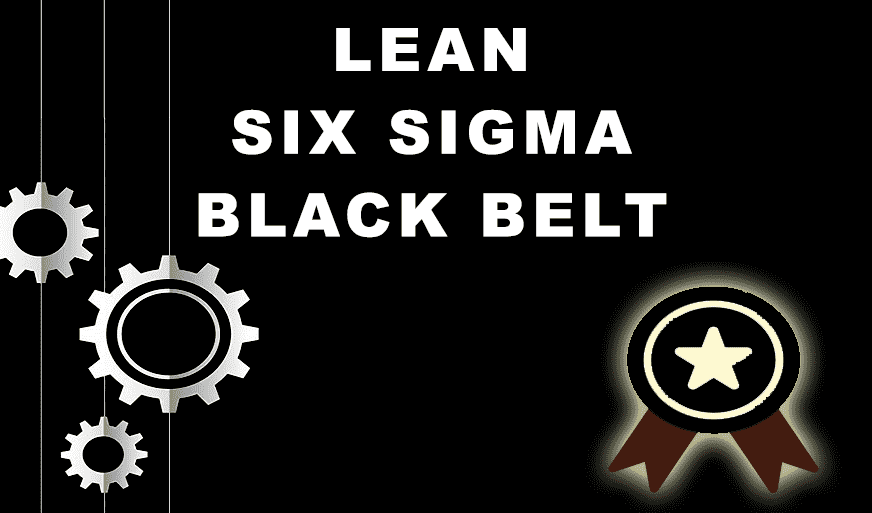5 Lean Continuous Improvement Principles to Supercharge Your Operations
-
 By Sushmith
By Sushmith - Published on Jan 2 2024

Table of Contents
- How Lean Principles Revolutionize Operational Strategies?
- Principle 1: Value-Centric Operations
- Principle 2: Value Stream Mapping
- Principle 3: Achieving Flow in Operations
- Principle 4: Pull-Based Systems in Lean
- Principle 5: Pursuit of Perfection
- Challenges and Solutions in Lean Implementation
- Unlock Lean Expertise with Sprintzeal
- FAQs
- Summary
How Lean Principles Revolutionize Operational Strategies?
As we had discussed in our first part of our LCI Guide series: The Lean Continuous Improvement Model, Eliminating Waste, Improving Flow, and Creating Value for the customer is the key for implementing Lean continuous improvement into your organization’s quality approaches.
Simply "doing things well" isn't enough to staying ahead of the curve. Traditional operational strategies often struggle to adapt and evolve. To truly thrive, organizations need a strategic advantage, a way to streamline operations, eliminate waste, and continuously improve. Here's where Lean principles swoop in, a powerful framework that's not just a set of tools, but a philosophy of continuous improvement that revolutionizes the business approaches. So, how exactly do Lean principles revolutionize operational strategies?
In this Part 6 of our Guide: Mastering Organizational Quality with Lean Continuous Improvement, let’s explore the key principles necessary for the implementation of the Lean Continuous Improvement that will help transform your organization into a better environment of quality and success:

Principle 1: Value-Centric Operations
Value-Centric Operations are not just about churning out products or services; it's about understanding what truly matters to your customers and aligning every aspect of your organization around delivering that value. Instead of focusing solely on production or profitability, it shifts the spotlight to delivering value to customer. But what exactly is "value" in quality management?
“What problem does my product or service solve for my customer? How does it make their lives easier, better, or more efficient?” That should be the sole understanding that will help you cater your services to your customers earning Customer Loyalty and Value Service Delivery.
Once you have a clear understanding of customer value, you can align every aspect of your operations around delivering it. Here are some actionable steps that helps put Value-Centric Operations into practice:
- Instead of focusing on features, focus on the problems your product solves.
- Instead of chasing production targets, prioritize delivering value at every step of the process.
- Instead of measuring success in units sold, measure it in customer satisfaction and loyalty.
Here are some practical tips that help you to put these steps into action:
- Conduct customer research: Understand their needs, wants, and pain points through surveys, interviews, and observations.
- Develop clear value propositions: Define the specific value your product or service delivers to different customer segments.
- Map your value stream: Identify all the steps involved in delivering your product or service, and identify opportunities to eliminate waste.
- Empower your employees: Encourage everyone in your organization to think about how their work contributes to customer value.
Principle 2: Value Stream Mapping
Without a clear understanding of your value stream your operations can feel like a maze with blindfolds on. Value Stream Mapping (VSM) allows you to visualize and optimize your workflows with precision. Every step, from procurement to delivery, forms a chain – a value stream.
But what if this chain is tangled with inefficiencies and delays, hindering your progress and draining your resources? By understanding the current state of your value stream, you can identify opportunities for improvement and plot the course towards smoother, faster, and more efficient services.
Here's how VSM works:
- Map your process: Identify every step involved in delivering your product or service, from conception to customer hands.
- Analyze lead times and value: Track the time it takes for each step and assess if it adds value for your customer.
- Identify waste: Look for activities that don't contribute to customer value, such as waiting, rework, or overproduction.
- Visualize the flow: Use standardized symbols to create a clear and concise representation of your value stream.
But how do you create a VSM? Here's a simplified step-by-step process:
- Define the scope: Identify the specific product or service you want to map.
- Gather data: Collect information on all the steps involved in your process, including cycle times, inventory levels, and resource allocation.
- Visualize the flow: Use standardized symbols to create a flowchart that represents your value stream, highlighting key activities & waste points.
- Analyze and improve: Identify areas for improvement based on your VSM, and develop action plans to address them.
- Monitor and adapt: Regularly review your VSM and adapt your process as needed to ensure continuous improvement.
Principle 3: Achieving Flow in Operations
Imagine a river flowing swiftly and effortlessly to its destination. That's the essence of achieving flow in operations: a state of continuous, uninterrupted movement of materials and information through your value stream. Flow is not just about consistency; it's about minimizing interruptions, eliminating restrictions, and creating a smooth & continuous movement of work from one stage to the next.
So, why is achieving flow so crucial? Here are just a few benefits:
- Reduced lead times: Products and services reach customers faster, increasing satisfaction and responsiveness.
- Lower costs: Eliminating waste and streamlining processes minimizes resource consumption and operational expenses.
- Increased employee morale: A smooth workflow fosters a positive and productive work environment, reducing stress and boosting engagement.
- Improved adaptability: Flexible processes can quickly adjust to changing demands and market conditions.
Achieving flow is about applying the Value Stream Mapping Principles. Here are some key strategies:
- Eliminate bottlenecks: Identify and address the constraints that slow down the flow, whether it's equipment limitations or inefficient processes.
- Reduce batch sizes: Smaller batches move through the system faster, minimizing work-in-progress and eliminating waiting times.
- Standardize work: Consistent processes and procedures create predictability and smoothness, reducing errors and rework.
- Pull-based systems: Respond to customer demand in real-time, avoiding overproduction and unnecessary inventory build-up.
- Visual management: Use boards and charts to track progress, identify issues in real-time, and foster a culture of continuous improvement.
Principle 4: Pull-Based Systems in Lean
Traditional manufacturing often relies on push-based systems, where processes are driven by forecasts and predefined schedules. However, Lean challenges this conventional approach by advocating for pull-based systems. This system often exceeds actual demand.
Here's how it works:
- Customer demand dictates production: Instead of pushing products through the system, you only produce what customers have actually ordered. This reduces inventory bloat, minimizes waste, and ensures your resources are used efficiently.
- Kanban systems: Visualize your workflow using Kanban boards, which track progress and limit the amount of work in progress (WIP). This prevents bottlenecks and ensures smooth flow.
- Small batch production: Produce smaller batches more frequently, enabling quicker response to changing demand and minimizing the impact of disruptions.
- Transparency and communication: Foster open communication throughout the supply chain, ensuring everyone is aligned with customer needs and can adapt to changing demands.
Instead of pushing products through pre-planned production schedules, pull-based systems in operations respond to real-time customer demand, not predictions or hunches. This leads to several advantages:
- Reduced inventory: No more mountains of unsold products taking up space and tying up resources.
- Increased responsiveness: You can adapt quickly to changing customer needs and market trends.
- Improved quality: Products are made only when needed, minimizing the risk of defects and obsolescence.
- Lower costs: You save on storage, transportation, and handling of unnecessary inventory.
Principle 5: Pursuit of Perfection
The Pursuit of Perfection is not a destination but a journey. This principle encourages organizations to view perfection not as an unattainable goal but as a standard that continuously evolves with each improvement made. Each small step forward, each ounce of waste shaved off, builds on the previous one, paving the path towards operational excellence.
By empowering your team to take part in this, you unlock the actual potential within your organization, leading to:
- Enhanced customer satisfaction: Consistent quality and efficient processes translate into happier, more loyal customers.
- Reduced costs: Eliminating waste, rework, and defects saves time, money, and resources.
- Improved employee engagement: Empowering everyone to contribute to improvement fosters a sense of ownership and pride.
- Sustainable growth: Building quality into your operations creates a foundation for long-term success and adaptability.
Challenges and Solutions in Lean Implementation
Implementing LCI principles often throws up challenges that can deter even the most enthusiastic professionals. Let’s explore some of the most common hurdles you might encounter:

Challenge 1: Resistance to Change:
Solution:
Communication and Transparency: Clearly explain the benefits of Lean and involve employees in the process.
Training and Development: Provide training to equip employees with the necessary skills and knowledge.
Celebrate Successes: Highlight and celebrate early wins to build momentum and enthusiasm.
Challenge 2: Lack of Understanding:
Solution:
Simple and Clear Communication: Use clear, concise language to explain Lean principles and avoid jargon.
Visual Aids: Utilize diagrams, charts, and other visual tools to illustrate concepts.
Case Studies: Share successful Lean implementation stories from similar organizations.
Challenge 3: Siloed Departments:
Solution:
Cross-functional Teams: Encourage collaboration between departments through cross-functional teams.
Shared Goals and Metrics: Align departmental goals with overall Lean objectives and track progress together.
Open Communication Channels: Foster open communication and information sharing across departments.
Challenge 4: Difficulty Measuring Progress:
Solution:
Define Clear Metrics: Identify key metrics aligned with your Lean goals and track progress regularly.
Data Visualization: Use dashboards and charts to make data easily understandable and actionable.
Regular Reviews: Conduct regular reviews to analyze progress, identify roadblocks, and adjust strategies as needed.
Unlock Lean Expertise with Sprintzeal
Having equipped you with the core principles of Lean, it's time to navigate this journey with challenges and opportunities to elevate your organization’s success. But this journey alone can be daunting. That's where Sprintzeal comes in. your trusted partner in Transforming your professional career.
Here's how Sprintzeal can help you Build a better professional career:
Customized Lean Implementation
Hands-on Training and Support
Data-driven Insights and Optimization
Building a Culture of Continuous Improvement
Sustainable Success
We bring more than just expertise:
Years of Experience
Proven Results
Tailored Solutions
Collaborative Partnership
Data-Driven Approach
Explore our comprehensive Quality Management training programs, led by Lean experts, and join our thriving community.
Ready to experience the transformative power of Lean with Sprintzeal? Contact us today or chat with our Couse expert to schedule a free consultation.
Remember, the journey to operational excellence starts with Sprintzeal as your partner in achieving results through Lean principles.
FAQs
Can Lean principles be applied to any industry?
Absolutely! Lean transcends industry boundaries. Whether you're in manufacturing, healthcare, software development, or even non-profit, the core principles of value, flow, and continuous improvement can be adapted and applied to optimize your operations.
How long does it take to implement Lean?
Lean is a journey, not a destination. While initial improvements can be seen quickly, achieving lasting transformation is an ongoing process. The length of time depends on factors like your organization's size, complexity, and commitment to implementation.
What are the biggest challenges in implementing Lean?
Common challenges include overcoming resistance to change, building a culture of continuous improvement, and maintaining momentum. Partnering with experienced Lean consultants like Sprintzeal can help address these challenges and ensure a smooth transition.
How can I measure the success of my Lean implementation?
Focus on key metrics like lead times, inventory levels, defect rates, and customer satisfaction. Track your progress over time and use data to identify areas for further improvement and celebrate your achievements.
Summary
The Lean revolution is a call to action for organizations seeking to thrive in today's dynamic landscape. In this blog, you’ve explored the potential for optimized workflows, reduced waste, and unwavering customer satisfaction that awaits your organization.
Here are some key takeaways to guide you on your path:
Value-centric operations: Shift your focus from products to the genuine value you deliver to your customers.
Value Stream Mapping: Chart the course to optimized workflows by visualizing every step of your process.
Achieve flow in operations: Eliminate bottlenecks and create smooth, continuous movement of work.
Pull-based systems: Respond to demand, not anticipate it, for maximum efficiency.
Embrace the pursuit of perfection: Foster a culture of continuous improvement, striving to eliminate waste at every turn.
And remember, Sprintzeal is your trusted partner in this transformation. We offer comprehensive Lean solutions, expert guidance, and unwavering support to empower you to achieve operational excellence.
Take the first step on your Lean journey today. Visit Sprintzeal.com for Diverse Training Solutions for Holistic Professional Growth!
Subscribe to Our Newsletter and receive latest insights, exclusive offers, and updates on training schedules to fuel your CI journey.
Subscribe to our Newsletters
Popular Programs
Trending Posts
Quality Management System – QSM Approaches and Methodologies
Last updated on Aug 22 2024
A Supply Chain Management Guide to Mastering Logistics End to End
Last updated on Nov 13 2023
Implementing 5S Methodology for Better Work Efficiency
Last updated on Dec 4 2023
Best Quality Management Tools
Last updated on Oct 8 2024
Quality Assurance vs Quality Control
Last updated on Aug 2 2023
How to Become a Quality Manager - Career, Job Scope and Certifications
Last updated on Dec 18 2023
Categories
- Agile Management 54
- AI and Machine Learning 42
- Big Data 53
- Business Management 51
- Cloud Computing 44
- Digital Marketing 56
- Information Security 8
- IT Hardware and Networking 17
- IT Security 103
- IT Service Management 29
- Leadership and Management 1
- Microsoft Program 2
- Other 43
- Programming Language 31
- Project Management 162
- Quality Management 75
- Risk Management 8
- Workplace Skill Building 2
Trending Now
Top Career benefits of Lean Six Sigma Green Belt
ArticleLean methodology, Six Sigma methodology and Lean Six Sigma Explained
ArticleSix Sigma Black Belt Certification – Value and Career Benefits in 2024
ArticlePareto Chart in Six Sigma - Explained
ArticleQuality Management Interview Questions 2024
ArticleSix Sigma Certification Guide - A Professional's Guide
ArticleSix Sigma Yellow Belt Certification - Six Sigma for Beginners
ArticleQuality Control Explained – Six Sigma
ArticleTotal Quality Management - A Complete Guide for Beginners
ArticleQuality Assurance in Six Sigma Explained
ArticleQuality Assurance vs Quality Control
ArticleSix Sigma Certification – Everything you Need to Know About Getting Certified
ArticleLean Six Sigma on Resume for Rewarding Career Benefits
ArticleQuality Manager Interview Questions and Answers for 2025
ebookService Delivery Manager Interview Questions and Answers (With Examples)
ArticleSix Sigma Interview Questions and Answers 2024
ArticleHow to become a Quality Analyst
ArticleA Supply Chain Management Guide to Mastering Logistics End to End
ArticleSenior Quality Manager Interview Questions and Answers 2024
ArticleTop 30 Quality Analyst Interview Questions and Answers 2025
ArticleFinancial Analyst Interview Questions and Answers 2024
ArticleRisk Manager Interview Questions and Answers 2024
ArticleCompliance Manager Interview Questions and Answers 2024
ArticleOperation Manager Interview Questions and Answers
ArticleHow to Become a Quality Manager - Career, Job Scope and Certifications
ArticleEssential Components of a Quality Management System
ArticleSix Sigma Certifications - Reasons Why you Should Get Them
ArticleTop Qualities of a Good Manager and a Leader
ArticleLearn about Statistical Process Control (SPC) and its top applications
ArticleCost of Poor Quality - A Detailed Guide
ArticleImplementing 5S Methodology for Better Work Efficiency
ArticleWhat Is Lean Management?
ArticleBest Six Sigma Books in 2024
ArticleLeadership vs Management - The Ultimate Guide
ArticleQuality Assurance Plan - Six Steps To Quality Assurance Plan
ArticleOperational Planning Creation, Key Elements and its Benefits
ArticleA Complete Guide to Product Life Cycle Stages 2025
ArticleSix Sigma tools for DMAIC Phases
ArticleWhat Is Lean Manufacturing?- An Overview
ArticleThe Lean Continuous Improvement Model: A Comprehensive Guide
ArticleDMAIC vs. DMADV: Key Differences and Choosing the Right Six Sigma Methodology
ArticleA Deep Dive into the Power of Lean Continuous Improvement Process
ArticleLean Continuous Improvement Methods for Business Excellence
ArticleIntroduction to Lean Manufacturing- Definitions, Framework, and More
ArticleUnderstanding the Key Principles of Lean Manufacturing
ArticleSecret to Unlock Organizational Excellence: Stages of Continuous Improvement
ArticleLean Continuous Improvement: A Detailed Guide to Mastering Organizational Quality
ArticleLean Waste Management: The Ultimate Guide 2023
ArticleA Deep Dive into Lean Continuous Improvement Tools
Article8 Wastes of Lean - Strategies for Identification and Elimination
ArticleThe Ultimate Guide to Lean Manufacturing
ArticleUnderstanding Lean Manufacturing's Pros and Cons
ArticleLean Waste Reduction Strategies: Boost Efficiency and Cut Costs
ArticleTop 10 Lean Manufacturing Tools for Optimal Productivity
ArticleBeyond the Basics: Benefits of Lean Continuous Improvement
ArticleWhat are Quality Standards? | A Guide to ISO Standards
Article7 Important Types of Quality Management System
ArticleA Comprehensive Guide to Quality Management Systems
ArticleISO 9001 Standard: Benefits and Certification
ArticleBenefits of QMS Certification for Your Business
ArticleStep-by-Step Implementation Guide to ISO 9001
ArticleThe Ultimate Guide to ISO 9001: Boosting Quality and Certification Success
ArticleQuality Management System – QSM Approaches and Methodologies
ArticleHow to Effectively Implement a Robust Quality Management System?
ArticleExplaining QMS Documentation Structure: Benefits and Best Practices
ArticleWho Needs ISO 9001 Certification and Why?
ArticleKey Elements of ISO 9001:2015 Quality Management System
ArticleOvercoming Common Challenges in ISO 9001 Certification: Tips and Best Practices
ArticleBest Quality Management Tools
ArticleTotal Quality Management (TQM) vs. Six Sigma
ArticleQuality Manager Salary: What Freshers & Experts Earn in 2025
ArticleCertified Scrum Product Owner: Job Roles And Responsibilities
ArticleTips for Continuous Integration Testing: Streamlining QA
Article10 Quality Management Strategies Adopted by Top Managers
Article

















